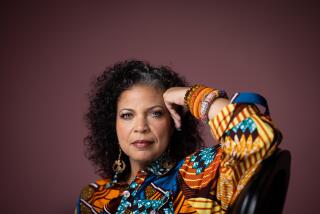Recalling ‘Sleepy Lagoon’
- Share via
Whenever I cover demonstrations against Police Chief Daryl F. Gates, I notice that the leadership and the participants are mostly African-American.
I’m sure you notice it, too, as you watch the events on television that have followed the beating of Rodney G. King, a black motorist, by white police officers.
It’s true that some major Latino organizations have called for Gates’ ouster. And it’s also true that an early entrant in the anti-Gates campaign was the multiracial, 32,000-member Service Employees International Union Local 399, whose Latino “Justice For Janitors” organizers were badly beaten and arrested by the LAPD in Century City last summer.
But mostly it’s been Mayor Tom Bradley, Rep. Maxine Waters and other black politicians and leaders on the firing line, and mostly it has been blacks chanting “Gates Must Go.”
This is perplexing, for history tells us that Latinos, just as much as blacks, have had experience with police brutality in Los Angeles.
In 1942, a civil rights case involving Latinos gripped the city almost as much as this year’s Rodney King beating. It began at an abandoned gravel pit near Atlantic and Slauson boulevards, where young Latinos used to swim. They called it “Sleepy Lagoon.”
In August, the body of a young Latino was found there. At the time, both the Los Angeles Police Department and the Sheriff’s Department, egged on by the press, were engaged in an all-out attack on what they termed “Mexican” crime and juvenile delinquency. The cops arrested 24 young Hispanics. Twelve were found guilty of murder and five of assault. But, in 1944, an appeals court examined the flimsy case against them and overturned the convictions. It was an epic victory for the Latino community and for the multiracial Sleepy Lagoon Defense Committee, which handled the case.
The Sleepy Lagoon defenders also took up the cause of the victims of the 1943 “Zoot Suit” riots, in which Los Angeles police stood by while several thousand servicemen and civilians beat Latino youths wearing draped jackets and pegged pants.
The multiracial coalition grew into the Los Angeles Conference on Community Relations, consisting of 33 multiracial groups, including unions, the Episcopal Diocese, the Jewish Community Relations Council and the Urban League, a leading African-American organization.
Political victory was achieved in 1949 with the election of Los Angeles’ first modern-day Latino city councilman, Ed Roybal, now a congressman.
Things started to fall apart during the War on Poverty. The Vietnam War drained money from domestic programs. Those days were notable for intense fights between blacks and Latinos over control of poverty agencies--sad, bitter fights for table scraps.
Despite the black-Latino-white liberal unity of Mayor Tom Bradley’s 1973 election, tensions have long been building.
Latinos suspect the black mayor favors blacks in appointments. As Latino immigrants have flooded once solidly African-American neighborhoods, Latino patients now crowd the Martin Luther King Jr./Drew Medical Center--a source of pride in the African-American community. The Latinos have been demanding more jobs at the hospital, and elsewhere in county government--jobs now often held by blacks.
A recent Times Poll found considerable ambivalence among Latinos toward Gates and the Police Department. Only a quarter of the Latinos--about the same as whites--said they felt Gates should be ousted immediately because of the King affair, noticeably lower than the almost 50% figure for African-Americans.
At the same time, eight out of 10 Latinos said they felt incidents of brutality were common among L.A. cops. Interestingly enough, that’s almost the same as the black response.
These conflicting responses could be interpreted as evidence that, while Latinos remember well their own bad dealings with the LAPD, they feel no compulsion to join with blacks callings for Gates’ head.
This attitude troubles a few Latino leaders active in civil rights causes. They are mindful of the large number of brutality complaints filed by Latinos against the LAPD in recent years. They want the brutality stopped, and don’t want an opportunity sacrificed to racial politics.
That’s why they, along with Justice for Janitors union members and some other grass-roots activists, intend to be out in force May 20 when the Christopher Commission, investigating the King beating, conducts a hearing on the Eastside at Wilson High School.
They’d like to remind the commissioners, and the city, about Sleepy Lagoon.
More to Read
Sign up for Essential California
The most important California stories and recommendations in your inbox every morning.
You may occasionally receive promotional content from the Los Angeles Times.










